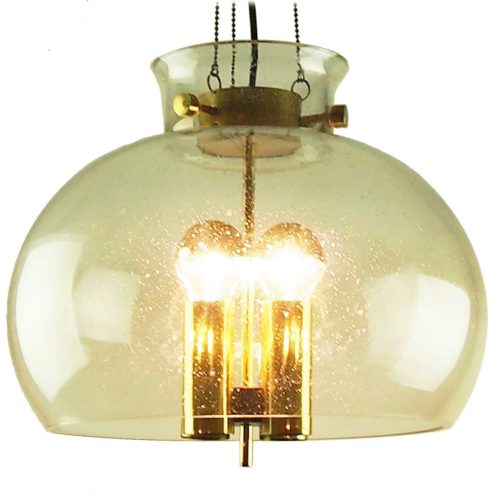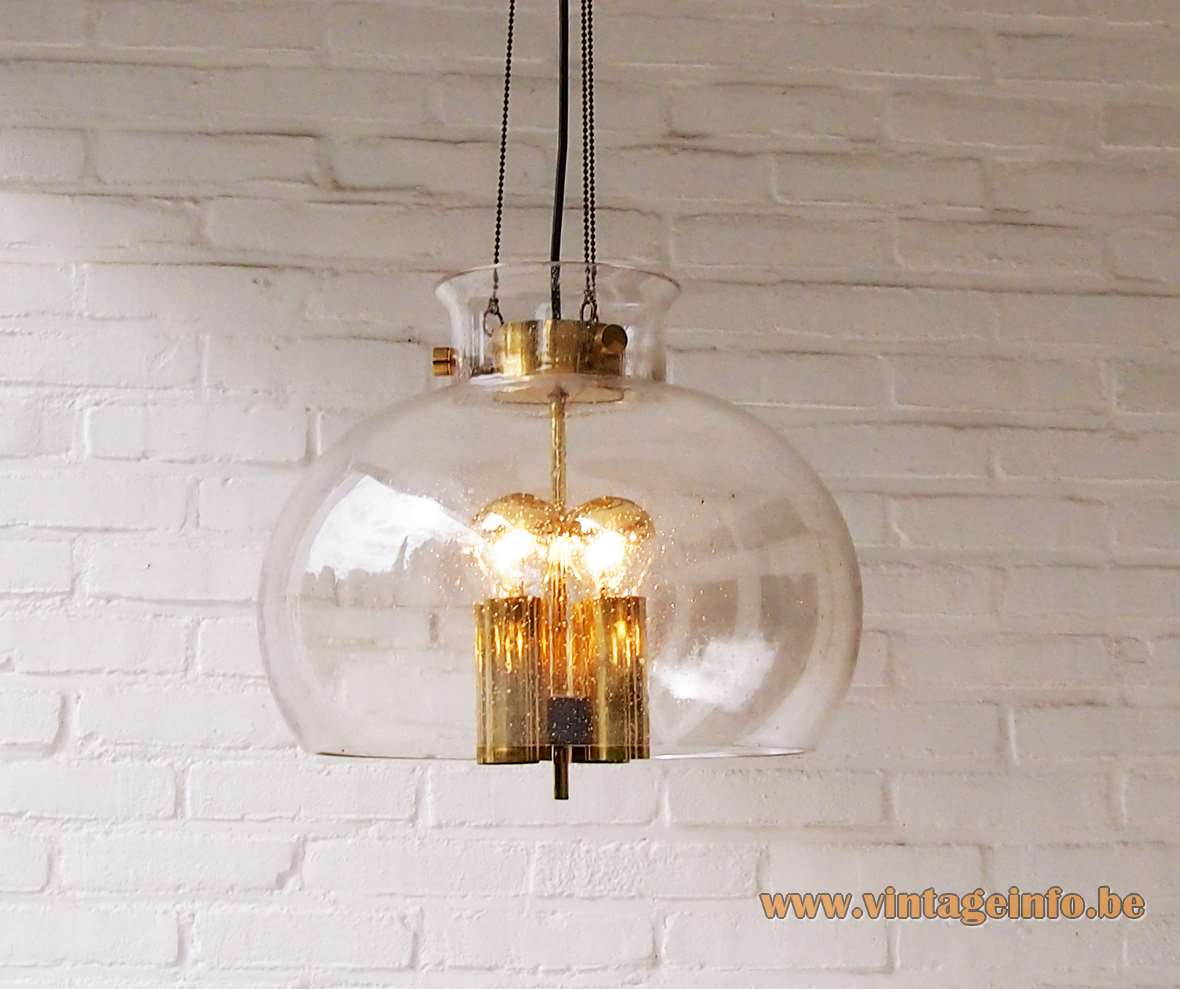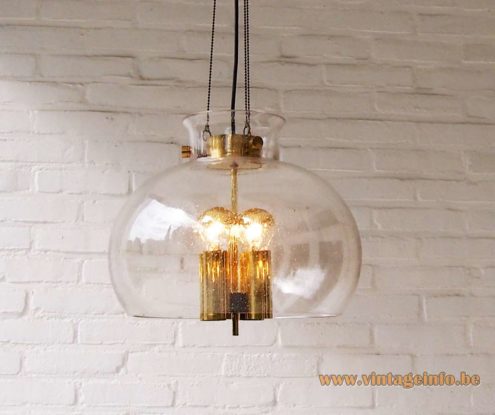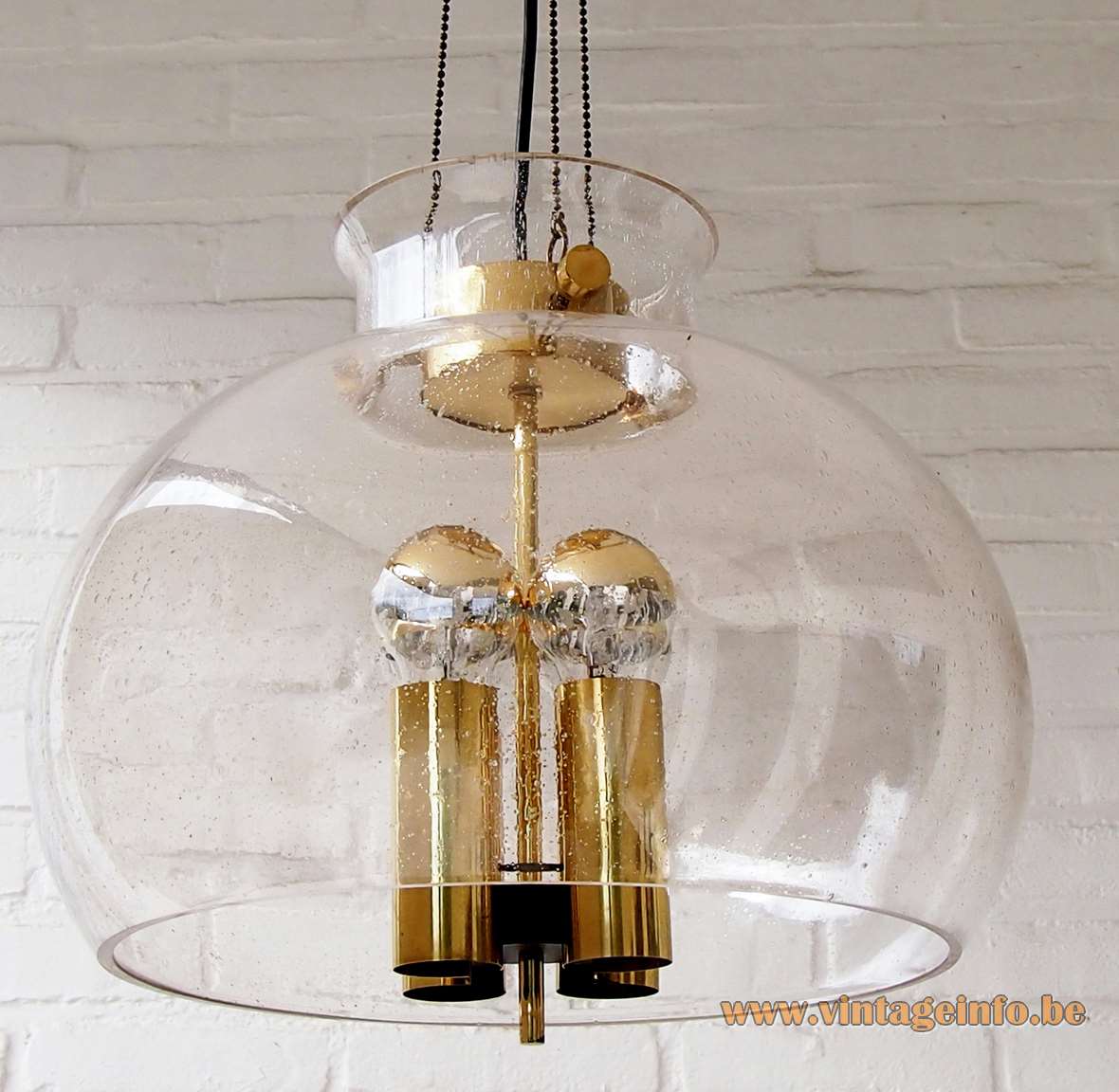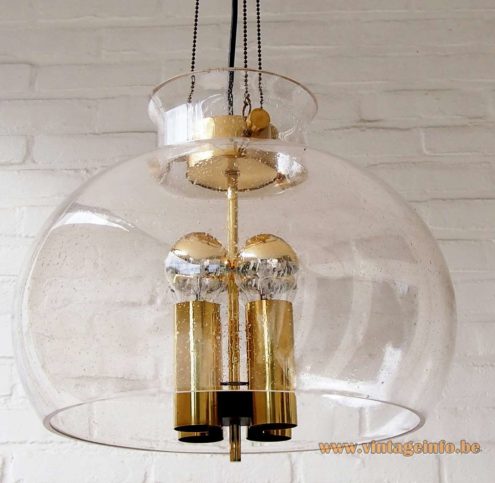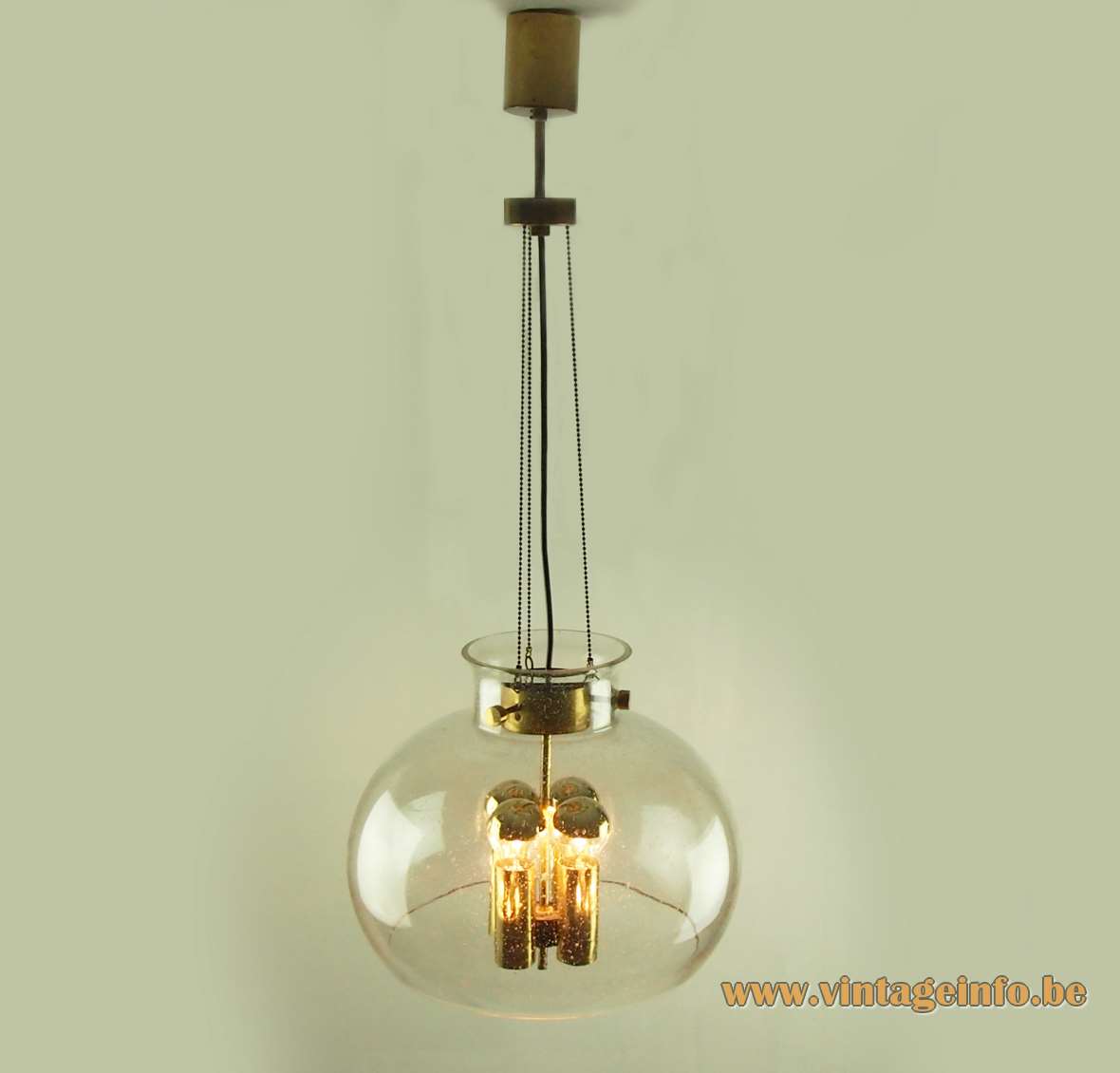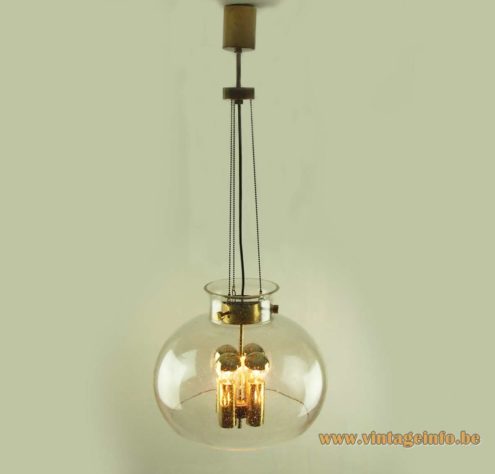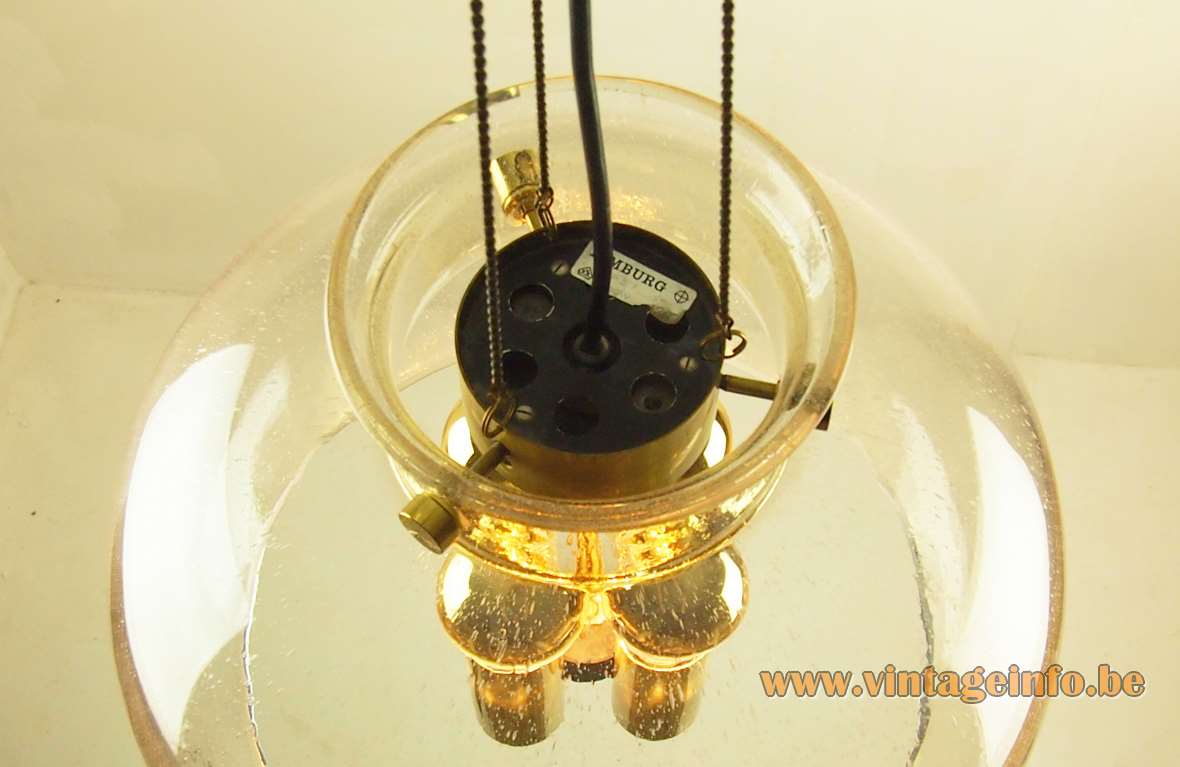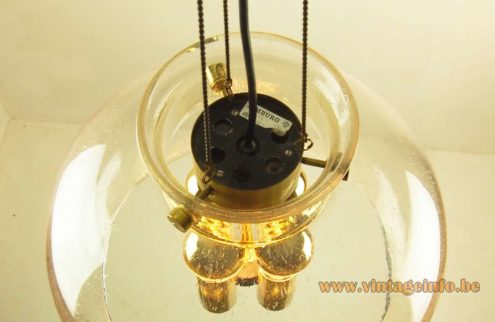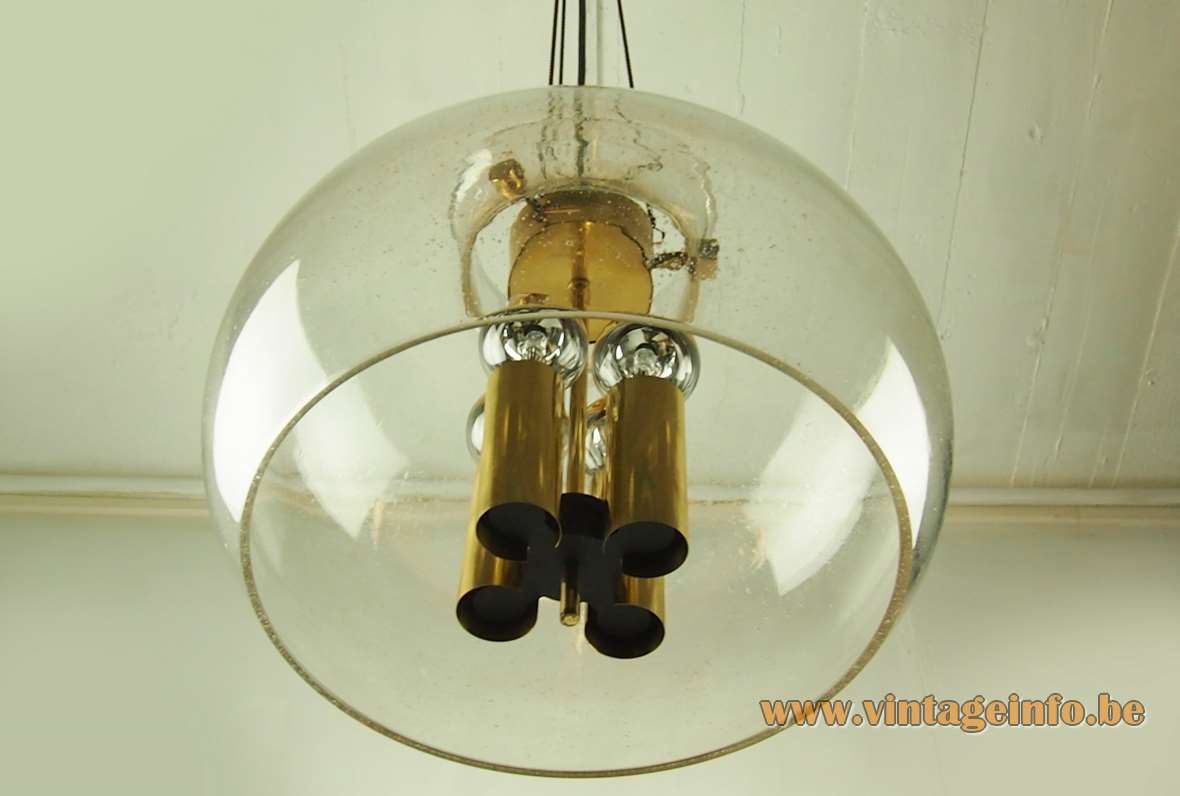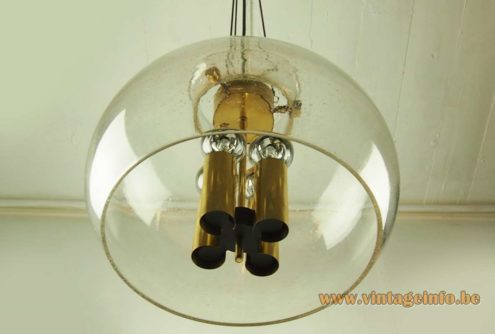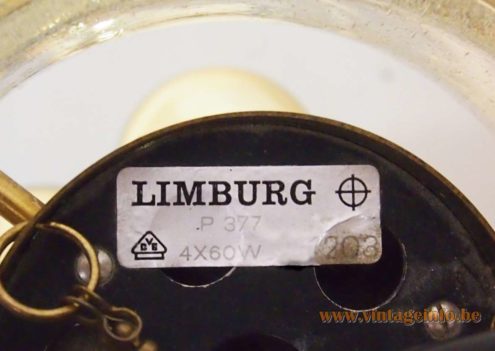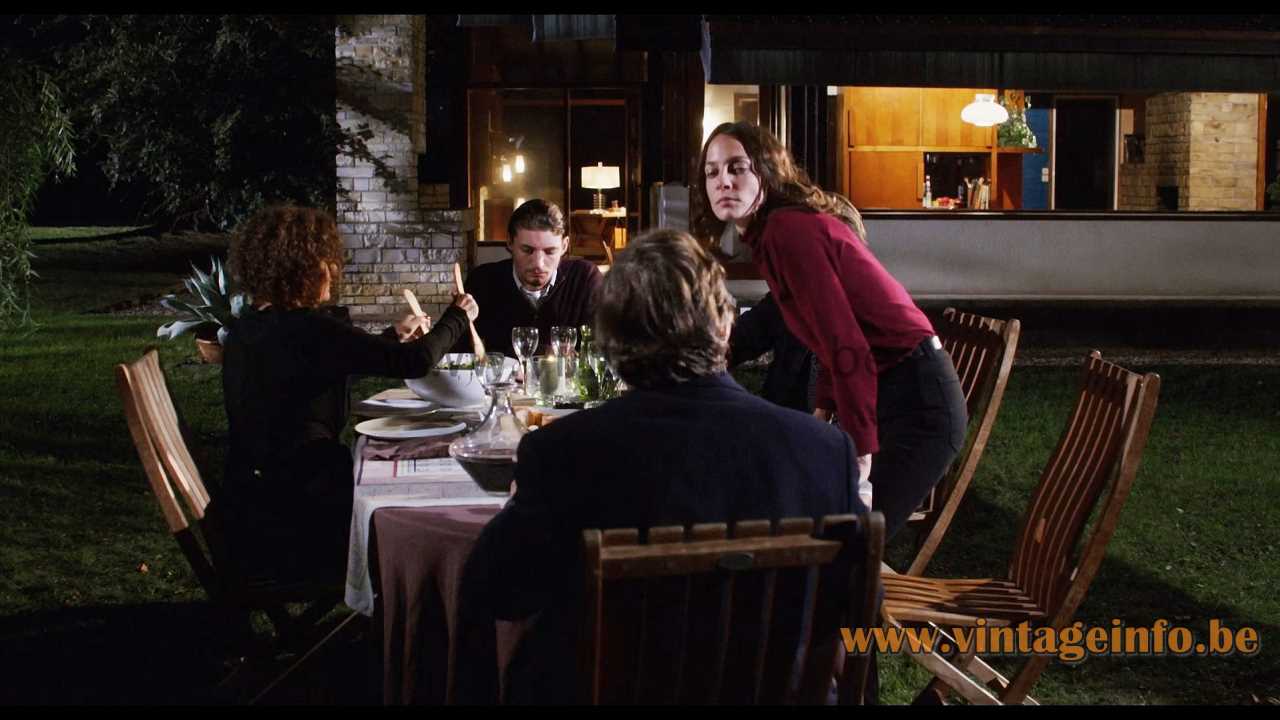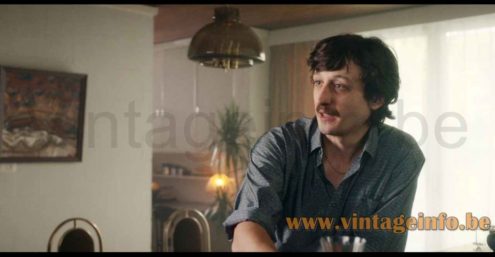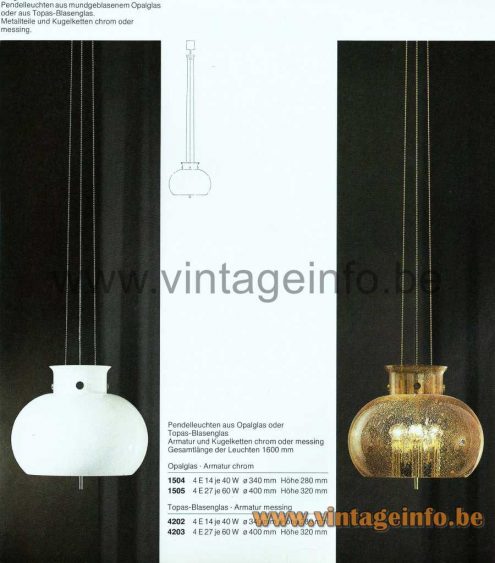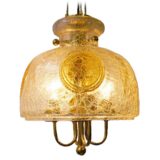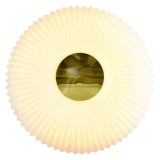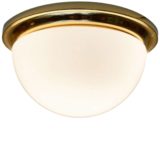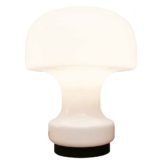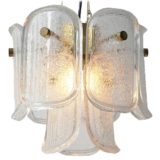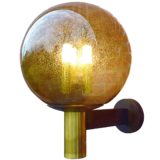Lamps In The Movies
An opal glass Herbert Proft Glashütte Limburg chandelier was used as a set decoration in the 2016French-Belgian drama film Diamant Noir (Dark Inclusion – Dark or Black Diamond). Starring Niels Schneider, Hans-Peter Cloos and August Diehl.
Links (all external links open in a new window)
Herbert Proft designs on the iF Design Awards website
Glashütte Limburg on the iF Design Awards website
Limburg an der Lahn on Wikipedia
Glashütte Limburg manufactures exclusive interior luminaires with natural gas
Diamant Noir (2016) film – Wikipedia
Diamant Noir (2016) film – IMDb
Dirty Lines (2022) TV series – IMDb
Vintageinfo
Droplet chandelier in this style
Crackle glass chandelier in this style
Helena Tynell bubble glass wall lamp
Opal glass mushroom table lamp
Helena Tynell bubble glass pendant lamp
Many thanks to Ger for the pictures.
Herbert Proft Glashütte Limburg Chandelie r
Materials: Round mottled and almost amber bubble glass lampshade. Brass rod, tubes and parts. 3 brass pearl chains. 3 ornamental brass screws. Round brass canopy. 4 Bakelite E27 sockets.
Chain: 90 – 130 cm / 35.43 – 51.18” – adjustable
Height: 35 cm / 13.77”
Width: 40 cm / 15.74”
Electricity: 4 bulbs E27, 4 x 60 watt maximum, 110/220 volt.
Any type of light bulb can be used, not a specific one preferred.
Period: 1970s, 1980s – Mid-Century Modern.
Designer: Herbert Proft.
Manufacturers:Glashütte Limburg, Glashüttenweg 1, 65549 Limburg an der Lahn, Germany.
Other versions: This Herbert Proft Glashütte Limburg chandelier or pendant lamp exists in several variations and models. Several variations were produced over the years. This one also exists in chrome and opal glass.
This one is model 1203, as labelled. Another chandelier made with crackle glass can be found here on Vintageinfo. Many models exists, below 2 others in a 1979 catalogue.
Herbert Proft
No information can be found unfortunately. Except for the lamps he designed for Glasshütte Limburg. 17 of them received an iF Design Award. Herbert Proft designed many beautiful lamps for the company. The lighting he designed that received an iF Design Award were all designed in the 70s.
Glashütte Limburg
Three months after the end of the Second World War in August 1945, graduate engineer Dr. Walter Heinrich submitted his first plans for setting up a glass-works to the American military authorities in Limburg an der Lahn in Germany. Approval for building the factory was issued rapidly because the country urgently needed all types of glass. As a result, the ground was broken for Glashütte Limburg as early as 28 September 1945.
Due to the lack of power and the difficulty in obtaining materials during the immediate post-war period, construction was initially slow. However, on 12 May 1947 the glass-works finally held its first topping-out ceremony, and barely 2 months later, on 7 July 1947, Dr. Heinrich used the blowpipe to take the first glass melted in Limburg.
Glasshüttenwerke Limburg GmbH
Initially, the company was named Glasshüttenwerke Limburg GmbH and employed 80 people. The production range covered drinking vessels, mugs and many other types of catering glasses.
Production capacities were increased and Glashütte Limburg became Europe’s largest lighting glass specialist within just a few years, employing almost 1000 people.
The rapid expansion reached its limits at the end of the 50s. The chairman of the glass-works Supervisory Council, Dr. Gottfried Boley, suggested in 1962 that the shares in the company held by the state of Hessen should be privatised.
In the same year, the company succeeded in winning BEGA Gantenbrink-Leuchten OHG, founded in 1945 – which was at that time already one of the largest companies in the German lighting industry – as its ideal partner.
Catalogues
The very first lighting catalogue of Glashütte Limburgappears in 1963.
Six luminaires from the range, presented for the first time in 1964 at the Hanover industrial trade fair, receive awards for excellent design from the Industry Forum and are included in the special exhibition “gute Industrieform” (good industrial design).
40 years after the first catalogue appeared, the range of lamps from Glashütte Limburg has increased to 1800 different products.
Designers
Many lamps of the company were designed by the Designabteilung Glashütte Limburg (design department) or Atelier Glashütte Limburg. Herbert Proft and Heinz-Josef Ohm designed many awarded lamps.
One of the best known designers was Helena Tynell who created several lamps for the company. Her most famous are the bubble glass lamps series. Helena Tynell (1918 – 2016) was married to the famous designer Paavo Tynell (1890-1973).
Awards
The Glashütte Limburg company received the state prize for “Gute Form 1982 ” (good design 1982) and the “Corporate Design Award 1985 “.
Glashütte Limburg received 160 iF Design Awards.
Lamps In The Movies
Another model of this Herbert Proft Glashütte Limburg chandelier was used as a set decoration in the 2022 Dutch TV series Dirty Lines. Here in season 1, episode 6. Starring: Joy Delima, Minne Koole and Chris Peters.
